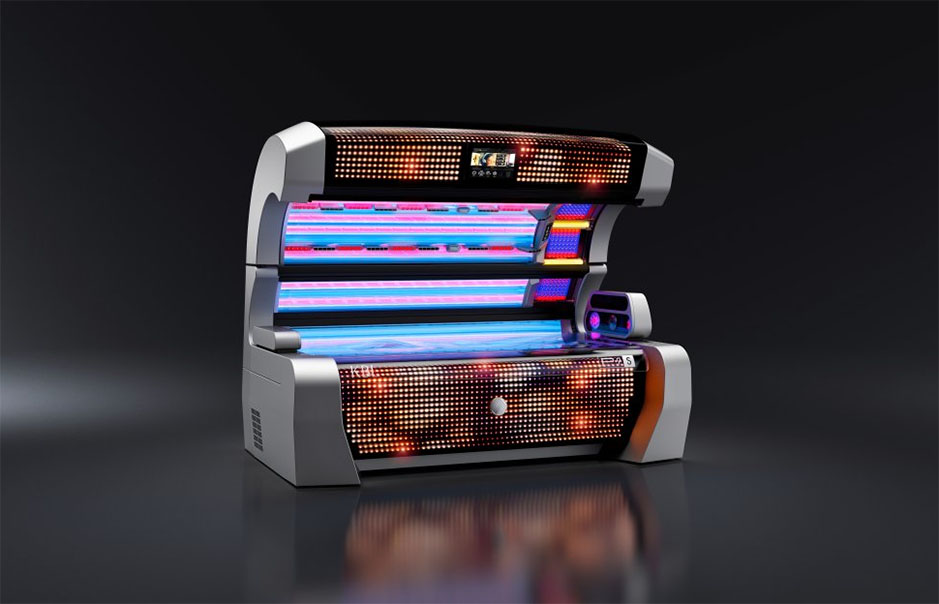Tanning Bed Time Chart: Achieving Your Golden Tan Safely
As summer approaches, many of us are dreaming of that sun-kissed, golden tan. While basking in the warm sunshine can help produce a natural tan, prolonged exposure raises the risk of sunburn, premature aging, and even skin cancer. For those seeking a safer controlled tanning alternative, tanning beds allow you to achieve a golden glow without the harmful risks of overexposure.
However, it’s crucial to develop a customized tanning schedule based on your unique skin type. Understanding how your skin reacts to UV light will ensure you tan safely and effectively in a tanning bed.
Determining Your Skin Type
Contents
When creating a tanning bed time chart, the first step is identifying your skin type. Dermatologists categorize skin into 4 main types:
Skin Type 1
If you have very fair or pale skin that burns easily in the sun, you likely have Skin Type 1. This skin type features undertones that appear blue or green and minimal melanin production. Without sufficient melanin to provide UV protection, Type 1 skin requires extra caution when tanning.
Skin Type 2
Skin Type 2 is characterized by fair complexions with lighter brown eyes and blonde or red hair. While this skin type can burn, it also tans better than Type 1 skin. With medium melanin levels, a gradual base tan can be built with careful monitoring to avoid burning.
Skin Type 3
Olive or medium brown skin that rarely burns falls under Skin Type 3. This skin type tans easily and thoroughly due to moderately high melanin levels. While it offers more natural UV protection, it still requires caution to avoid overexposure.
Skin Type 4
Darker brown skin types with high concentrations of melanin are categorized as Skin Type 4. This skin tans quickly and deeply while rarely experiencing burns. Natural melanin provides substantial UV protection.
Tanning Bed Exposure Guidelines

Once you’ve determined your skin type, consult this tanning bed time chart for recommended exposure periods:
Week 1
- Skin Type 1: 2-4 minutes
- Skin Type 2: 4-6 minutes
- Skin Type 3: 6-8 minutes
- Skin Type 4: 8-10 minutes
Week 2
- Skin Type 1: 4-6 minutes
- Skin Type 2: 6-8 minutes
- Skin Type 3: 8-10 minutes
- Skin Type 4: 10-12 minutes
Week 3
- Skin Type 1: 6-8 minutes
- Skin Type 2: 8-10 minutes
- Skin Type 3: 10-12 minutes
- Skin Type 4: 12-15 minutes
Week 4
- Skin Type 1: 8-10 minutes
- Skin Type 2: 10-12 minutes
- Skin Type 3: 12-15 minutes
- Skin Type 4: 15-18 minutes
Gradually increasing tanning time allows the skin to adapt while minimizing risks. Never exceed the recommended duration based on your skin type.
Tanning Tips for Different Skin Types
To safely achieve your perfect tan, follow these tips tailored for your skin:
Fair Skin (Types 1-2)
- Apply tanning accelerator and moisturizers to prevent dryness
- Wear protective eyewear to shield sensitive eyes
- Build a base tan gradually to avoid burning
- Limit initial sessions to under 10 minutes
Medium Skin (Type 3)
- Use an accelerator to speed up tanning
- Exfoliate before tanning to maximize tan results
- Moisturize skin regularly to prevent peeling
- Work up to longer session times to deepen tan intensity
Darker Skin (Type 4)
- Apply accelerator lotions to help skin darken faster
- Use moisturizers to prevent drying and flaking
- Gradually increase exposure times for an extremely dark tan
- Exfoliate occasionally to revitalize skin
Tanning Bed Precautions
While strategic tanning can provide that desired golden glow, improper use of tanning beds also comes with risks. Follow these precautions for safe tanning:
- Wear FDA-compliant eyewear to shield your eyes
- Follow the manufacturer’s instructions for your tanning bed model
- Never tan more than once every 24 hours
- Apply Broad Spectrum SPF 30 sunscreen on exposed skin
- Discontinue use if skin appears burned or damaged
- Consult a dermatologist if you have any skin concerns
The American Academy of Dermatology advises avoiding tanning beds altogether and opting for sunless tanning products to minimize skin cancer risks from UV exposure.
Types of Tanning Beds

Tanning beds use different strengths of UV lamps to tailor intensity levels. The level or type of tanning bed will impact the exposure times needed to tan.
Level 1 Tanning Beds
Level 1 beds use low-pressure UV lamps and emit mostly UVA rays with a small portion of UVB rays. They gently bronze the skin over an extended period of time.
Level 2 Tanning Beds
Medium-pressure lamps in Level 2 tanning beds produce more UVB rays, allowing faster tanning by penetrating the upper layers of skin.
Level 3 Tanning Beds
High-intensity UV lamps emit higher concentrations of UVB for fastest tanning results. However, Level 3 beds increase risks of burning for fair skin.
Know your skin’s limits and tolerate UV exposure to make the right tanning bed choice.
Risks and Precautions
While tanning beds provide a controlled alternative to sun exposure, improper use still poses health hazards including:
- Premature skin aging from repeated UV exposure
- Potential skin damage and increased skin cancer risk
- Photokeratitis, burns or other eye conditions
- Dehydration and dryness without proper moisture
Tanning when the UV index is high (above 3) enhances risks. Closely follow usage instructions and limit exposure times.
Maximizing Your Tanning Bed Results
Achieving your perfect bronze glow depends on effectively using tanning beds tailored for your skin type. Consider these tips:
- Choose tanning lotions with skin-nourishing ingredients and DHA for natural color
- Exfoliate before tanning to remove dead skin cells
- Moisturize skin regularly before and after tanning bed use
- Select reputable tanning lotion brands and read feedbacks
- Avoid bronzers that could rub off and stain skin or clothes
- Wear loose dark clothing and avoid lotions or perfumes to prevent stains
How Long to See Tanning Results
With consistent tanning sessions, most skin types begin seeing noticeable bronze color within 1-2 weeks. However, results depend on several factors:
- Fairer skin takes longer to show visible color change than darker skin
- Higher intensity tanning beds produce faster tanning
- Following recommended exposure times darkens skin more effectively
- Using tanning lotions helps accelerate color development
While an appealing tan may develop within a few weeks, prolonged tanning bed use raises health concerns. Achieve your glow safely by limiting sessions and gradually building color.
Conclusion
With strategic tanning schedules and smart precautions, you can safely achieve a golden tan just in time for summer. Determine your skin type, find a reputable salon with optimal tanning beds, and stick to recommended exposure times. Protect your skin and eyes, amp up results with quality lotions, and enjoy your healthy sun-kissed look.

Founded by Sophia Rodriguez, IGXO Cosmetics is a PETA-certified, cruelty-free, and vegan makeup brand.





